With all this talk about eating local and counting miles I thought it would be good to explain what it really means. The foundation for local eating starts with a foodshed.
Foodshed: a region or area from which a population draws its food.
The typical limit on these regions is 100 miles. Draw a 100-mile circle around where you live and that is your foodshed.
In economic terms this is ideal distance a farmer, or her goods, can travel to reach a market. That way it arrives on your plate as fresh, ripe, and nutritious as it can be.
Go outside of this limit and there is an increasing reliance on fossil fuels and a decreasing quality of the food.
For those concerned about pollution, global warming, or oil-addiction these “food miles” are a cause for concern. Farmers face similar concerns, albeit from the other side, with a rising cost of gas and oil-based fertilizers that narrow their profits.
Still for others the “go local” movement represents a desire to get the very best food they can find, and that is the fundamental reason for foodsheds.
I’ve tried to document what happens to our health with the advent of low quality food, our acceptance of it, and the difference in nutritional content.
These rings of farmland surrounding our communities represent the ideal of sustainable living. Where the countryside is not poverty-stricken, but instead a vibrant economic sector known as much for its wineries and ‘farm-days’ as it is for fresh meat, vegetables, fruits, and nuts.
Even more these areas are often recession proof as evidenced by their continual rapid growth during the past half-decade.
It is for all these reasons that the locavore movement is popular and gaining momentum, there is something in it for everyone. Even the beefiest of meat eaters.
For further reference I’ve pulled together several maps of America’s foodsheds. Take a look.
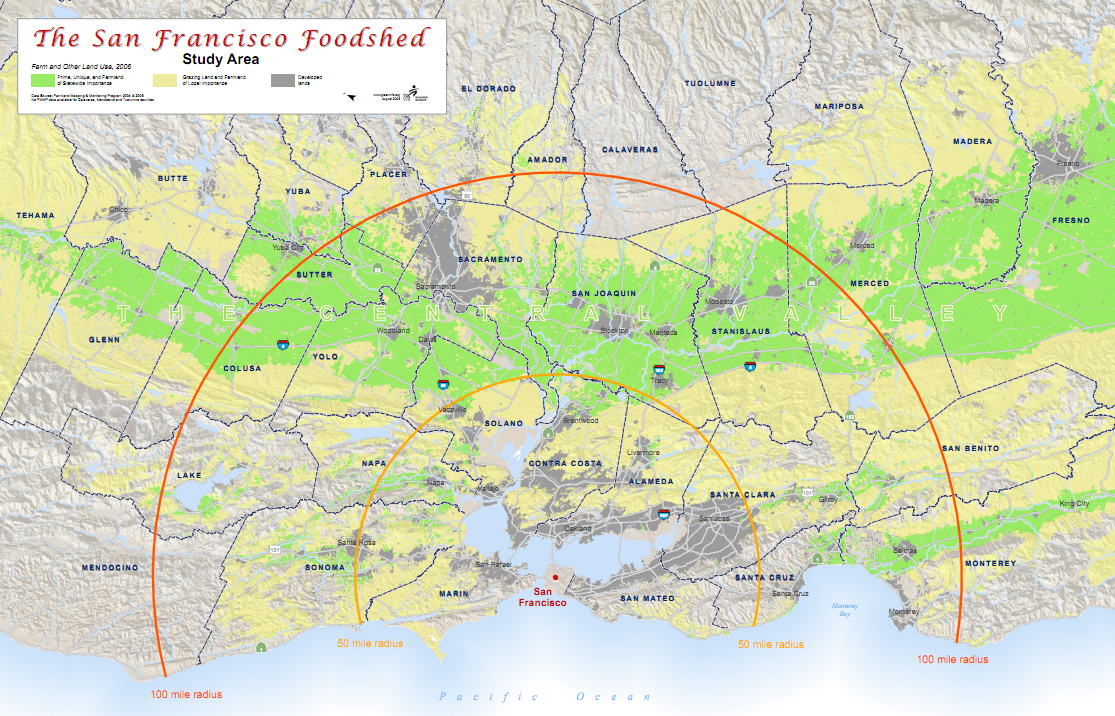
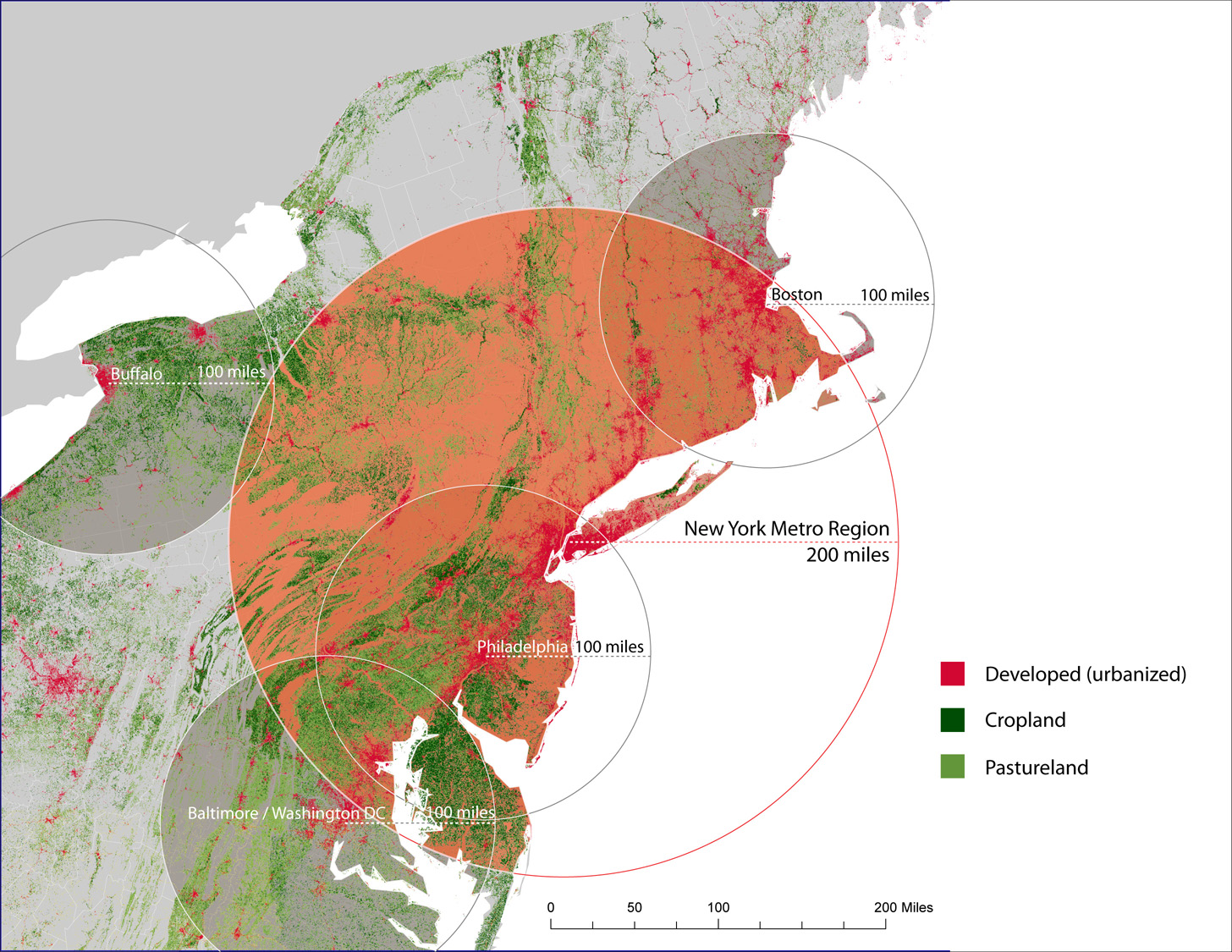
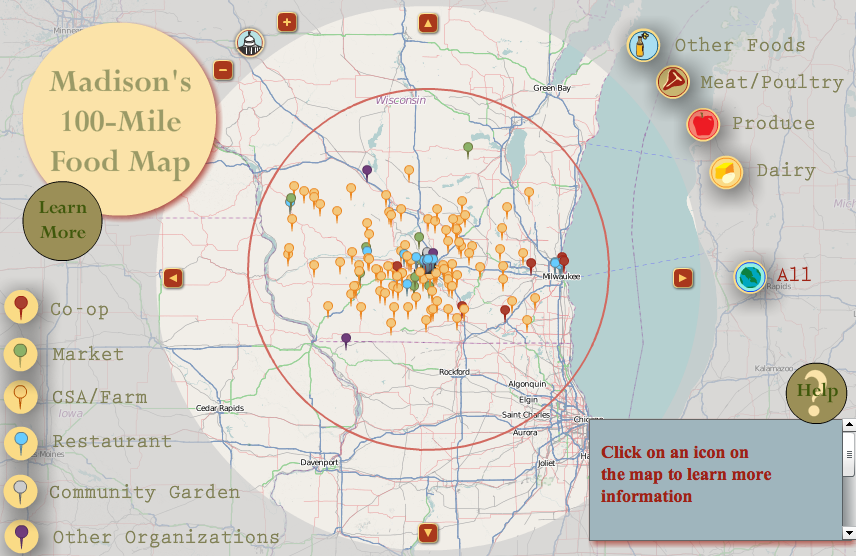
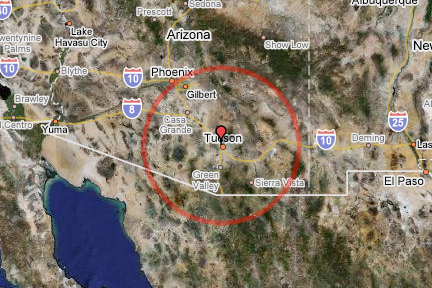
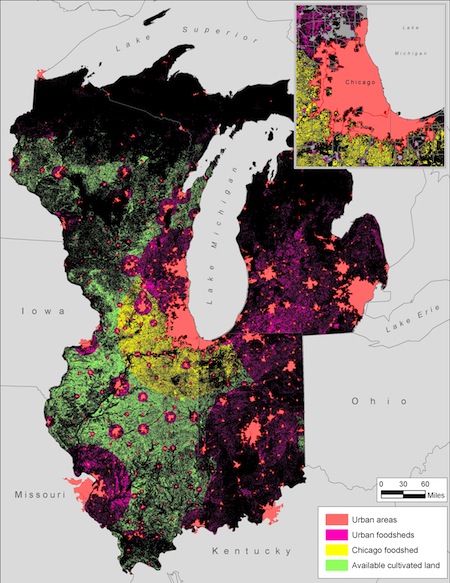


References
San Francisco Foodshed Report, American Farmland Trust
Regional Foodshed Initiative, Columbia University
Feeding the City, University of Chicago
Greater Philadelphia Food System Study (pdf)
Place-based foods of Appalachia (pdf)